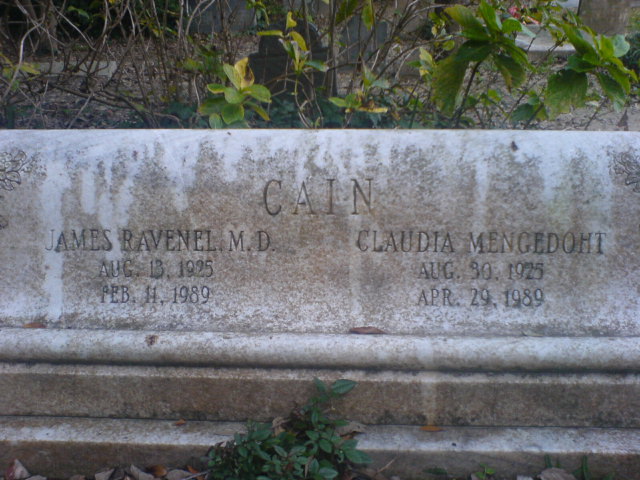The Venetian Republic in the Time of the Bellini
The Venetian Republic in the Time of the Bellini
By
Varo Borja
When he is best, he is a little worse than a man; and when he is worst, he is little better than a beast.
William Shakespeare, "The Merchant of Venice", Act 1 scene 2
English dramatist & poet (1564 - 1616)
In this essay I will attempt to relate to the reader the state of the Venetian Republic in the time of the Bellini family (c. 1400-1516 c.e.). The Bellini were a family of painters who resided and worked in the Venetian Republic, for the most part, and helped to change the face of art as we know it today. I will also give a few examples of the body of work of the Bellini, as well as a summary of how I feel the social and economic conditions in the Venetian Republic affected the style and content of the work of the Bellini family and how their work helped influence succeeding generations.
Venice is located in the Northeastern section of Italy known as the Veneto region. According to macalester.edu, Venice is referred to as the “miracle of the Northeast”. Also, according to macalester.edu, Venice is one of the fastest growing cities in Italy in terms of population and economy. Venice rests in the center of a shallow lagoon in the Northwestern corner of the Adriatic Sea. The Adriatic separates the Italian peninsula from the mainland of the Slavic states. In 1500, Jacopo de’Barbari, the Venetian painter and printmaker, made this map of the Serenissima (a name for the Republic of Venice; means literally “the serene” (Wikipedia, 2007)).
The precursor to the heyday of 15th century Venice was the conquest of the most of the Italian peninsula by Gian Galeazzo Visconti, the signore of Milan. According to historyworld.net, Gian Galeazzo was “a voracious conqueror, suspected in his own time of harboring the ambition to become king of all Italy. He systematically seized the territories of lesser signori. Those lying between Milan and Venice included Verona and Vicenza, two cities ruled by the della Scala family (known also as Scaliger in the Latin version of their name). Vicenza fell to Gian Galeazzo in 1384 and Verona in 1387. His next target was Padua, ruled by the Carrara family, which he took in 1388.” However, before he could consolidate his conquests, Galeazzo died of the plague in 1402, leaving Venice in a prime position to play the part of the “jackal after the feast of the Lion” (historyworld.net). Venice picked up the pieces of Galeazzo’s conquests, not only adding prime trade routes for their merchant fleet in the Middle East (independently of the Galeazzo affair), but annexing the Veneto plain (named, like Venice, for an Indo European tribe, The Veneti (historyworld.net)) and territories to the north and west of the capital.
In the mid to late 15th century, Venice acquired more territory and flowered as no other Italian state did during this time. Her Mediterranean trade empire was unrivalled in splendor and elegance, and she was able to produce the last great revival of Gothic architecture, as well as a marvelous tradition for printmaking. According to historyworld.net, Venice captured “Brescia (1426) followed by Bergamo (1428), gains from Milan which are acknowledged in the peace of Lodi (1454). With this rich hinterland, and a string of Mediterranean islands all the way to Cyprus…” Venice had built a Mediterranean empire of epic proportions. However, with the discovery of the Americas and the new trade routes that opened because of that discovery, the League of Cambrai, formed to check Venetian expansion on the mainland, as well as the Turkish conquest of Constantinople (modern day Istanbul), Venice was due for a rapid decline from the pinnacle of her power from the beginning of the 16th century onwards. However, war and famine have never been the anathema of the arts. So much progress was made, regardless of unfavorable economic and political circumstances, under the influence of the Bellini and their successors.
It is ironic, however, that during her heyday the taste of the ruling class of Venetians (Venice was an oligarchy, ruled by a closed nobility but with a citizen, or cittadino Chancellor) was mostly rooted in the outdated forms of the International Gothic and Byzantine traditions which favored gold leaf, wispy, ethereal figures and the medieval penchant for doom and gloom instead of the Classical themes of most of the rest of Italy, that were imbued with eroticism and humanist sympathies. Maybe as a result of focusing on the accumulation of wealth and overseas empire, the Venetians needed a stable base from which to launch such enterprises, therefore fostering greater control by the clergy and the nobility over the libertine tendencies of artists working in the early to mid Quattrocento era, as well as other facets of possible internal strife or perceived moral decay. Furthermore, as a result of the loss of these conquests and the marginalizing of Venetian prospects for economic and political domination, it seems that Venice needed a new outlet for her precocious populace: the Arts.
The Bellini family (Jacopo, Gentile, and Giovanni) witnessed more than a century of this rise and retraction of power, and benefited from it in a cultural sense, as well as a purely aesthetic one. Because of the open lines of trade and Venetian hegemony after the fall of Gian Galeazzo, Jacopo Bellini was able to travel to Florence in 1420 with his eldest son, Gentile (Art Across Time, Vol. 2) as well sojourn in Padua for a time, picking up elements of early and High Renaissance style along the way. By the time of Gentile’s maturity as a painter, he had been to Constantinople (Istanbul) to paint the portrait of Sultan Mehmet; once again as a result of the ever-expanding sphere of influence of the Venetian republic in the Mediterranean. As has already been stated though, much of Jacopo and Gentile Bellini’s works reflected heavily the Gothic and Byzantine traditions, featuring elements such as gold leaf and an almost ghostlike rendering of the human form. Giovanni Bellini’s work, however, began to shed the Quattrocento style of Venice and deigned to give birth to a lineage of painting resembling more the Flemish and Northern Italian schools than any of the previous Venetian traditions. The trade routes forged by Venice during the 15th century and the lines of communication fostered by those trade routes with the rest of Europe gave Giovanni Bellini a wealth of material to base his style upon. It is supposed by most scholars that he was able to view some of the paintings of Flemish artists such as Van Eyck and particularly Roger Van der Weyden. Giovanni’s rendering of Doge Leonardo Loredan (see header) owed much more to Van der Weyden’s heightened sense of realism than it did to the craggy or overly ethereal figures favored by previous Venetian painters. The expression on the Doge’s face, one of serenity (much like the Serenissima which he ruled) in the face of overwhelming odds, the delicate embroidery of his vestment, and the gold light suffusing all, hearkening in a new era for the illumination of the hearts and minds of the Venetian republic, instead of the cold glow of gold from the coffers won at the expense of her priceless soul. In the words of Laurie Schneider Adams (Art Across Time, Vol. 2) Giovanni Bellini certainly was “in the forefront of Renaissance innovation”.
In conclusion, I think it is important to realize that the Bellini family not only created art that reflected the times and circumstances in which they lived, but they also provided, through their own genius and the tutelage of such famous painters as Giorgione and Titian, the impetus for the continuing growth and change of the arts and culture for not only the Venetian Republic, but for much of the Western World. After the defeats at the hands of the Papal legions yoked together by the League of Cambrai, Venice eventually regained much of her former status and autonomy. Rome was eventually sacked by Imperial troops under Charles V in 1527, paying in kind the haughty aspirations of the papacy and inadvertently rejuvenating the Venetian republic, even though the Venetians, through ties to the papacy via the League of Cognac, were on the losing side as well. However, with the coming of the Protestant Reformation in 1517 and the eventual Counter Reformation of 1545, the papacy regained it’s former hegemony and instituted a severe yoke upon the Roman Catholic world: The Inquisition. Rules and regulations were instituted upon the world of culture as well as every other facet of the lives of millions of the citizens of Southern Europe and the New World. However, by regaining it’s autonomy, the Republic of Venice acted as a type of counter balance to the counter- reformation, a real Serenissima amidst the storm of political and religious intolerance and backbiting bigotry. Perhaps then, the Bellini played a part in priming the fire for continued liberty of the arts among the riparian lanes of the capital of the Veneto, suffused with the golden yellow light captured by Giovanni Bellini and illuminating the hearts and minds of the Western world with a spiritual sunbeam of freedom on the horizon of a land filled with renewed darkness and the cruelty of thwarted pride.
Bibliography
Bellini, Giorgione, and Titian: David Alan Brown and Sylvia Ferino-Pagden. Yale University Press, New Haven and London. 2006.
Art Across Time: Vol. 2: Laurie Schneider Adams. McGraw Hill, Boston. 2007.
Wikipedia. Found at: http://en.wikipedia.org/wiki/Main_Page
Historyworld.net. Found at:http://www.historyworld.net/wrldhis/PlainTextHistories.asp?groupid=432&HistoryID=aa43
Veniceblog. Found at: http://veniceblog.typepad.com/veniceblog/2004/03/jacopo_de_barba.html
Macalester.edu. Found at: http://www.macalester.edu/courses/geog61/ataff/Physical%20Geography.htm



